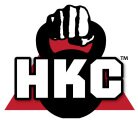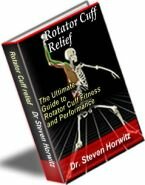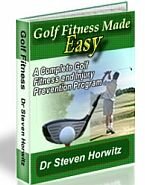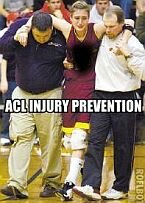Female Athletic Triad
WHAT IS F.A.T.?
Many women who participate in sports strive for thinness in hopes of performing better, or looking better while performing. These women are overly concerned with weight, food, and body shape. Female Athlete Triad (F.A.T.) can be a result of this behavior and consists of the following interrelated health problems, that occur in three stages:
- Excessive exercise and disordered eating habits in women can cause an energy deficit, thus stressing the body and changing the body's hormone levels.
- As a result, the reproductive system can shut down and potentially disrupt the normal cycle of menses. This is called amenorrhea.
- If the hormones are not brought back into balance, the body begins the silent process of destroying bone. This is called osteoporosis.
In addition to overexercising, stage 1 can include any one or combination of the following:
- Food restriction
- Bingeing and purging
- Diet pills or laxatives
- Rigid food patterns
- Preoccupation with food
This can lead to deprivation of needed proteins and calories, which is detrimental not only for energy and performance, but for strong bones and overall health.
Amenorrhea is the second stage that is the absence of three consecutive menstrual cycles in women who have already begun menses. Unless pregnancy is indicated, this is a warning sign that the body's hormones are seriously out of balance. If the hormones aren't brought back to normal levels, premature osteoporosis can result.
Osteoporosis is a disease in which the bones lose calcium and other minerals, thus causing the bones to become brittle. This usually occurs in the elderly and effects women more greatly than men due to the decreased production of the hormone estrogen after menopause. However, during F.A.T., osteoporosis occurs prematurely giving young women a bone density similar to women in their 50's and 60's. Once this occurs in these young women, it may not be possible to replace the lost bone.
HOW TO PREVENT F.A.T
- Establish regular menstrual cycles and proper estrogen levels with your doctor.
- Talk to a dietician about proper chemical balance (i.e. calcium, protein, etc.) and improving energy through good nutrition.
- Practice mental preparation techniques and if you suspect a problem is evolving, talk to a mental health professional who is familiar with eating disorders.
- Don't overtrain or overexercise. If necessary, work with a personal trainer to develop a program that increases muscle mass and strength.
By maintaining these good habits, you can ensure that the bone building process is not disrupted during the critical period from adolescence to the early 30's, and thereby prevent F.A.T. from developing.
See Medical Concerns in the Female Athlete
- Stur, R. Female Athlete Triad. Metro Sports Magazine. January, 1999; p. 36.
- Wiberg JMM, Nordsteen J, Nilsson N. The Short-term effect of spinal manipulation in the Treatment of infantile colic: A randomized Controlled clinical trial with a blind observer. Journal of Manipulative Physiologic Therapeutics 1999; 22:517 - 522.
OSTEOPOROSIS AND WEIGHT TRAINING
According to Liz Neporent, MA, CSCS, author of Weight Training for Dummies, the key to osteoporosis treatment is quite simple: "You have to lift weights," said Neporent. "You can throw calcium at the problem all day long, but unless you train your bones to hold onto that calcium, it's not going to do much good. Weight training teaches bones to hold on to calcium and stay strong. The act of weight-bearing exercise sends a signal to the bones that they need to be strong to endure the exercise."
"The one thing most people don't realize," pointed out Neporent, "is that osteoporosis is site specific. What that means is that you might not get it in your legs, but you easily could get it in your upper body if you don't use your arms. That's why a weight-training program has to address all the major muscle groups of the body."
MORE ON OSTEOPOROSIS
According to a report from the surgeon general, about half of the population over age 50 will eventually get osteoporosis. While most people think that osteoporosis affects mainly women, the fact is that two million men have it as well... and another 12 million men are at risk. The good news is that osteoporosis is not a fait accompli. In the June 14, 2005, issue of Daily Health News, we see about how weight training could help strengthen bones. Of course, as we all have learned so well over the years, there is almost always something that improved diet and nutritional support can do to help reverse illness, and osteoporosis is no exception.
For the specifics, let us go to Alan Gaby, MD, author of Preventing and Reversing Osteoporosis: What You Can Do About Bone Loss (Prima Lifestyles), and Daily Health News contributing editor Andrew L. Rubman, ND, who has a primary focus of gastroenterology and its impact on overall health.
Three Factors for Osteoporosis
I asked Dr. Gaby why he thought osteoporosis was so prevalent. "You have to remember," he said, "osteoporosis was a nonentity until 100 years ago. We have to look for factors in the modern lifestyle to explain why it has become so common." In speculating as to what these factors might be, he suggested three.
"First and foremost is diet," said Dr. Gaby." We eat a number of foods that leach calcium from our system. People following the recent protein-focused diets tend to eat lots of meat without a lot of vegetables for balance, thus creating an excess of phosphates and uric acid, which are produced when animal proteins are metabolized. In addition, diets rich in processed sugar and soft drinks, especially phosphoric acid-containing colas, rob calcium from the body. Refined flour and grains deplete copper, magnesium and B vitamins, all of which are also needed for bone health."
"The second factor is a sedentary lifestyle," Dr. Gaby explained. "And the third factor, in my opinion, is the abundance of toxic metals in our environment. Aluminum, lead and cadmium have all been shown to disrupt the bones in animal studies. Aluminum, for example, is everywhere -- we wrap our food in it, we put it in antiperspirants and we drink beverages out of aluminum cans. Put these three factors together, and it's not surprising that we're seeing so many problems with bone health."
More Than Just Calcium and Vitamin D
Now that we know about osteoporosis causes, what's good for osteoporosis prevention?
"Bone health is about a lot more than just calcium supplements and vitamin D," said Dr. Gaby. "Bone is active living tissue with a wide range of nutritional needs. A good nutritional supplement for osteoporosis prevention should contain all the other important minerals and vitamins needed for preventing bone loss and creating new bone formation -- magnesium, copper, manganese, boron, silicon, the B vitamins and, of course, vitamin K. The trace minerals strontium and zinc also are important."
Getting enough protein also is critical, since recent studies showed that elderly people with the least amount of protein in their diets had the weakest bones. Be sure to combine your protein intake with a salad or other green veggies, or you risk compromising your bone health. The best sources of protein are lean meat and poultry (preferably organic), eggs and whey protein powder.
Dr. Rubman says that in order to ensure complete digestion and absorption of minerals, people over age 40 need to supplement with digestive enzymes at meals in order to offset the natural reduction in stomach acid that occurs with age. As a corollary, Dr. Rubman said, "We can count on future studies showing a dramatic increase in osteoporosis associated with acid-suppressing pharmacy." This will not be a surprise in that most dietary and supplemental forms of calcium and magnesium require a strong acid presence in the stomach to be absorbed. "In effect, people who are taking acid-suppressing medications on an ongoing basis can potentially give themselves osteoporosis. Some of my patients come to me with a history of years of antacid use... and osteoporosis," said Dr. Rubman.
Vitamin K
Dr. Gaby also makes a point of singling out vitamin K. "Vitamin K stimulates a permanent chemical change in the bones that causes them to actually attract calcium. Most people do not get enough vitamin K." The best sources? Green, leafy vegetables, he said. Lettuce has a lot of vitamin K. The darker the color, the better.
The one source you should not use for calcium? Dairy. Dr. Gaby points out, "Population studies show that milk drinkers do not have better bones, and they have as many fractures as nonmilk drinkers," he said. Plus, processed cow's milk is probably the single greatest inducer of allergies in the population. It is better to increase intake of dark green vegetables, an excellent source of calcium and other minerals. Other good sources are fortified orange juice and fortified soy milk or tofu.
Supplementing Calcium
If, after changing your diet, you still feel the need to supplement calcium, Dr. Rubman suggests that you choose a calcium supplement that includes magnesium, which helps calcium to be effectively absorbed by your body. Adults need between 1,000 mg and 1,300 mg of calcium per day depending on their age.
The supplement should have a two-to-one ratio of calcium to magnesium and is best taken in increments of 500 mg or less several times per day rather than all at once. Divided doses provide better absorption.
A healthy diet filled with dark green leafy vegetables... quality protein... and a solid multivitamin/mineral supplement, plus some extra calcium/magnesium, should put you on a path to strong healthy bones.
One caveat from Dr. Rubman -- because estrogen is critical to the absorption of calcium throughout the body, women who are not fully utilizing the estrogen in their bodies can suffer from osteoporosis. Speak with your doctor about finding a specialist to examine this issue.
For more information on the Female Athletic Triad see:
The Female Athlete Triad, from the American Academy of Family Physicians
|
The Ultimate Nutritional Lie Detector Test LEARN MORE 
|
Kettlebell Rehab

Click Here
To See How Kettlebells will transform your body!
Vortex Rehab

Click Here
To See How This
Revolutionary Machine
Can Help You!
Partner / Support

Loans up to 3 months - fast cash advances for up to 90 days and up to $5,000!


















